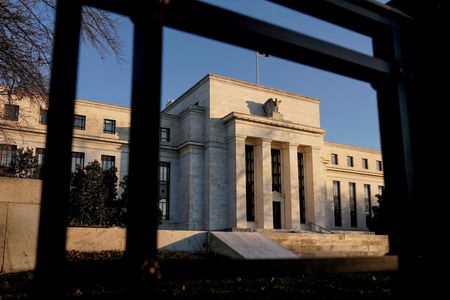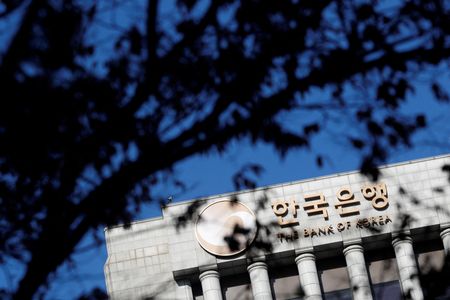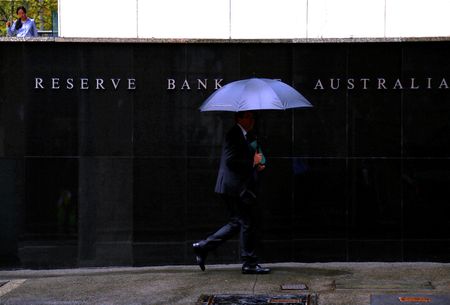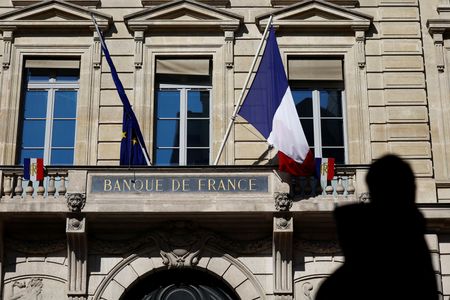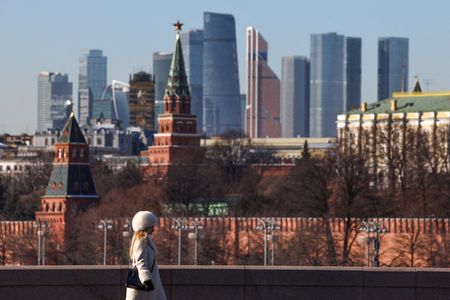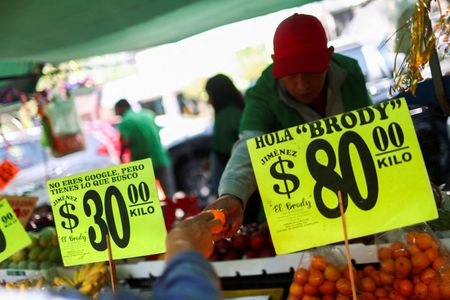By Howard Schneider
WASHINGTON (Reuters) -Only “a couple” of officials at the Federal Reserve’s June 17-18 meeting said they felt interest rates could be reduced as soon as this month, with most policymakers remaining worried about the inflationary pressure they expect to come from President Donald Trump’s use of tariffs to reshape global trade.
Trump has demanded immediate, steep cuts, and called for Fed Chair Jerome Powell to resign.
The minutes released on Wednesday, however, showed only narrow support for a near-term reduction in borrowing costs among the Fed’s 19 policymakers, with “some” of them feeling no rate cut would be needed at all.
“Most participants” at the Fed’s meeting last month anticipated rate cuts would be appropriate later this year, with any price shock from tariffs expected to be “temporary or modest,” the minutes said.
There was no indication that any policymaker felt the U.S. central bank’s benchmark overnight rate, currently in the 4.25%-4.50% range, should be cut by several percentage points, as Trump wants.
“Several” policymakers indeed felt the current policy rate “may not be far above” the neutral level, at which economic activity is neither stimulated nor restricted, and previously published policymaker forecasts show even the most dovish of the 19 U.S.
central bankers see less than a percentage point of cuts this year, and no more than another percentage point in 2026.
Despite what it characterized as “considerable uncertainty” over the exact inflationary effects of tariffs, the minutes “underscored the lack of urgency to cut rates anytime soon,” Priscilla Thiagamoorthy, senior economist at BMO Capital Markets, wrote in a note.
The central bank’s policy-setting Federal Open Market Committee last month voted unanimously to leave rates unchanged.
After the minutes of that meeting were published, traders pared their already miniscule bets on a rate cut at the Fed’s July 29-30 gathering, with rate futures continuing to point to 50 basis points of cuts by the end of this year, matching the median forecast from central bank policymakers.
“Participants generally agreed that, with economic growth and the labor market still solid and current monetary policy moderately or modestly restrictive, the Committee was well positioned to wait for more clarity on the outlook for inflation and economic activity,” the minutes said.
While many policymakers agreed rate cuts might be appropriate later this year, there was broad division about the outlook.
“Some participants … saw the risk of elevated inflation as remaining more prominent,” the minutes said.
In updated projections issued after the June meeting, seven Fed policymakers anticipated no rate cuts this year.
“A few participants saw risks to the labor market as having become predominant,” the minutes stated.
‘CAREFUL APPROACH’
Fed policymakers also were split on how they see underlying demand, with “several” pointing to solid consumer spending and “several” others pointing to signs of softening.
Several policymakers also noted that lower-income households were switching to lower-cost items and could be disproportionately affected by tariff-related price increases.
But officials seemed, in large part, wary of changing monetary policy while so much remained up in the air about the final tariff rates that Trump intends to impose and how businesses and consumers will respond.
Fed officials “agreed … it remained appropriate to take a careful approach in adjusting monetary policy,” according to the minutes.
The comments in the minutes were reflected in the interest rate projections issued after last month’s meeting, with the median rate outlook pointing to two quarter-percentage-point reductions by the end of 2025.
Investors expect an initial cut at the Fed’s meeting in September and a second one in December.
Fed Governor Christopher Waller and Fed Vice Chair for Supervision Michelle Bowman have since said they felt rates could fall as soon as this month’s meeting.
(Reporting by Howard Schneider and Ann Saphir; Editing by Chizu Nomiyama and Paul Simao)

